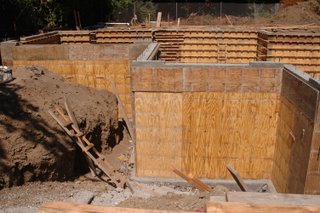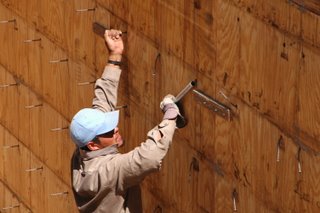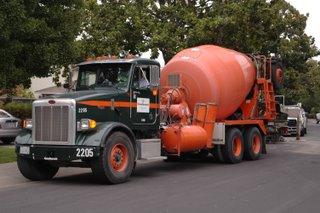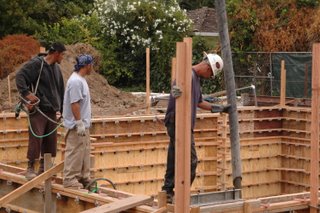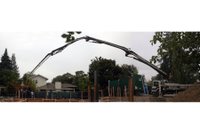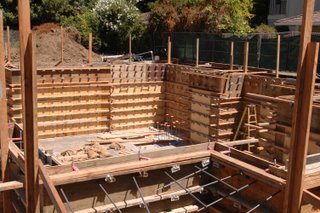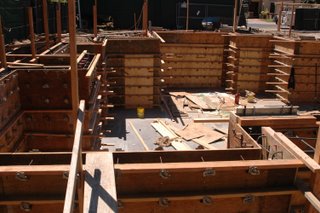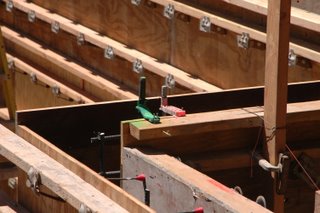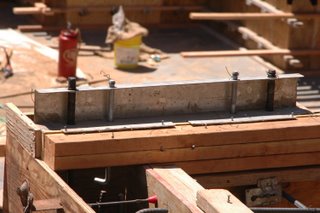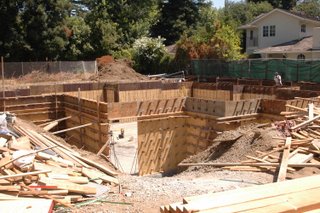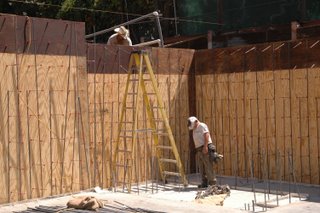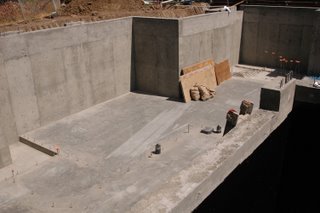



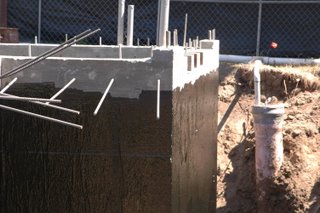 We met with Brad at the job site this afternoon.
We met with Brad at the job site this afternoon.One of the four concrete samples, taken by DCI back on August 18, was tested at day 7. Unfortu- nately, the results were below ex- pectations. The sample tested to 1,100 lbs, rather than the expected ~60% or 1,800 lbs at day 7. Brad is going to have them test another sample at day 14 (normally they would have performed the next test at day 28). We're keeping our fingers crossed at this point because if the day 14 results are not good, then we may have a big problem.
In the meantime, the crew from Jim Giancola Concrete has finished removing all of the plywood from the inside of the basement walls. And Waterproofing Associates has started applying the first of two layers of Tremco waterproofing membrane. After that, they'll be attaching Volclay Ultraseal to the walls.
Brad said he'll be pouring the concrete for the backfill next Thursday.





